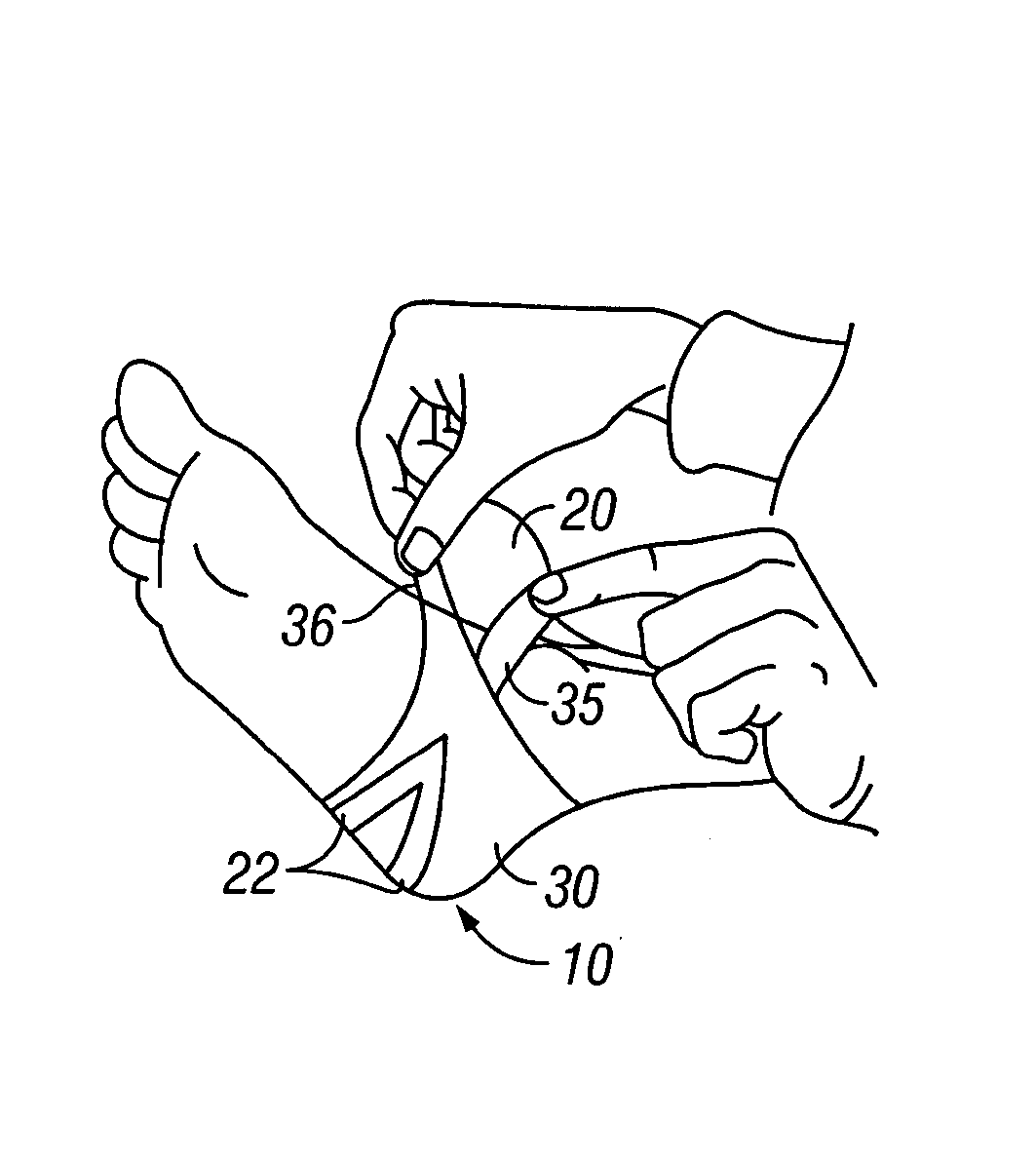Negative pressure wound treatment dressing
a wound treatment and negative pressure technology, applied in the field of open, chronic wounds, can solve the problems of amputation of the extremity, necrotizing the tissue, and difficult closure of these wounds,
- Summary
- Abstract
- Description
- Claims
- Application Information
AI Technical Summary
Benefits of technology
Problems solved by technology
Method used
Image
Examples
Embodiment Construction
[0021] Although those of ordinary skill in the art will readily recognize many alternative embodiments, especially in light of the illustrations provided herein, this detailed description is exemplary of the preferred embodiment of the present invention as well as alternate embodiments, the scope of which is limited only by the claims that may be drawn hereto.
[0022] The details of the preferred embodiments of present invention are graphically and schematically illustrated in the accompanying drawings. Like elements in the drawings are represented by like numbers, and any similar elements are represented by like numbers with a different lower case suffix.
[0023] Referring now to FIG. 1 in particular, there is illustrated the primary components of the occlusive wrapping 10 of the negative pressure dressing system that operates in accordance with the present invention. The occlusive wrapping 10 consists of a fluid manifold 14 embedded within an occlusive drape 16. The occlusive drape ...
PUM
 Login to View More
Login to View More Abstract
Description
Claims
Application Information
 Login to View More
Login to View More - R&D
- Intellectual Property
- Life Sciences
- Materials
- Tech Scout
- Unparalleled Data Quality
- Higher Quality Content
- 60% Fewer Hallucinations
Browse by: Latest US Patents, China's latest patents, Technical Efficacy Thesaurus, Application Domain, Technology Topic, Popular Technical Reports.
© 2025 PatSnap. All rights reserved.Legal|Privacy policy|Modern Slavery Act Transparency Statement|Sitemap|About US| Contact US: help@patsnap.com



